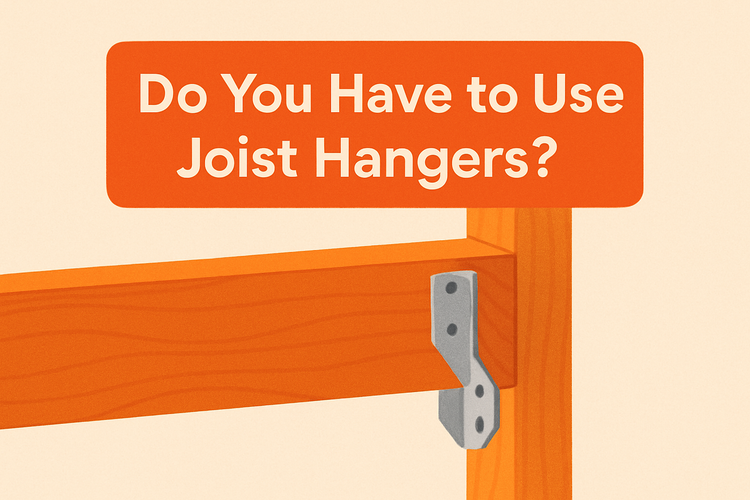Do You Have To Use Joist Hangers

Why Use Joist Hangers in Construction?
Joist hangers provide crucial support for structural floor framing. They’re designed to securely connect joists to beams or walls, ensuring stability and load-bearing capacity.
These metal brackets are especially vital when the ends of joists need additional support or when you’re building structures where direct bearing on ledgers or beams isn’t feasible. Using joist hangers adds reliability to any timber construction by distributing the weight evenly and reducing movement, enhancing both safety and longevity.
Joist hangers also allow for faster, more accurate installation, making them an essential tool for both professional contractors and DIY enthusiasts. Their use can mitigate structural issues down the line, such as sagging floors or loosening connections, especially in high-traffic or load-intensive areas.
Different Types of Joist Hangers and Their Uses
There are several types of joist hangers available, each designed for specific applications. Whether you're working with timber, glulam, or even laminated beams, choosing the right style is key.
Standard face-mount hangers are the most common and are ideal for most residential flooring systems. For added load support or tight fits, top-flange joist hangers might be more suitable. You can also find concealed flange hangers for aesthetic projects where a clean finish is desired. For larger structural elements like glulam beams, using appropriate connectors for Glulam timber ensures optimal performance.
Specialty hangers are also available for skewed or sloped joists and irregular surfaces. These provide the same level of support as standard models but can be adjusted to accommodate unique architectural requirements. Builders working with cross-laminated timber should explore connectors for cross laminated timber to find products that integrate well with those materials.
The Role of Joist Hangers in Structural Integrity
Joist hangers do more than just hold wood—they play a vital role in preserving the structural integrity of your build. By providing stable, fixed points of attachment, they prevent lateral and vertical movement of joists under load.
This adds a significant level of rigidity to the floor or deck system and minimizes issues related to vibration, creaking or warping wood. When properly installed, joist hangers align the joists with minimal error, creating level and flush floor surfaces crucial for flooring installation and long-term durability.
In environments subject to high wind or seismic activity, combining joist hangers with other reinforcements like high wind ties & timber connectors can ensure that even the most extreme conditions won’t compromise your framing system. It’s not just about stronger beams—it's about how they’re connected.
Installation Best Practices and Common Mistakes
The key to getting the most out of joist hangers is ensuring proper installation. Even the best hardware underperforms if it's not installed correctly.
Use the manufacturer-recommended fasteners like nails or screws—not random ones from your toolbox. Joist hangers are tested with specific fasteners to meet structural performance standards. Avoid shortcutting with double-nailed angle brackets or inappropriate hardware, as this can undermine the entire support system. You'll find the correct screws and nails for joist hanger installation in our dedicated collection.
Level and align each joist before fastening. Skewed nails or misaligned brackets cause structural strain, reduce load capacity, and compromise long-term performance. Another common error is using hangers across incompatible materials—always match the hanger type with your joist and beam materials for lasting strength.
When You Might Consider Alternatives
While joist hangers are highly effective, there may be situations where alternative support systems are more appropriate, especially in post-frame or brick-and-mortar construction.
In such cases, options like post bases or restraint straps might be more suitable. These provide foundational or bracing support for upright posts and help secure walls or beams against lateral forces. Post bases are particularly useful for projects where structural elements rise vertically from concrete pads or footings and aren’t directly tying into horizontal joists.
Ultimately, joist hangers are best for horizontal tie-ins between framing members, whereas other hardware may be necessary in mixed-material or vertical load-bearing applications. Understanding your project’s specific needs will guide whether joist hangers are the best solution or part of a broader connection strategy.
